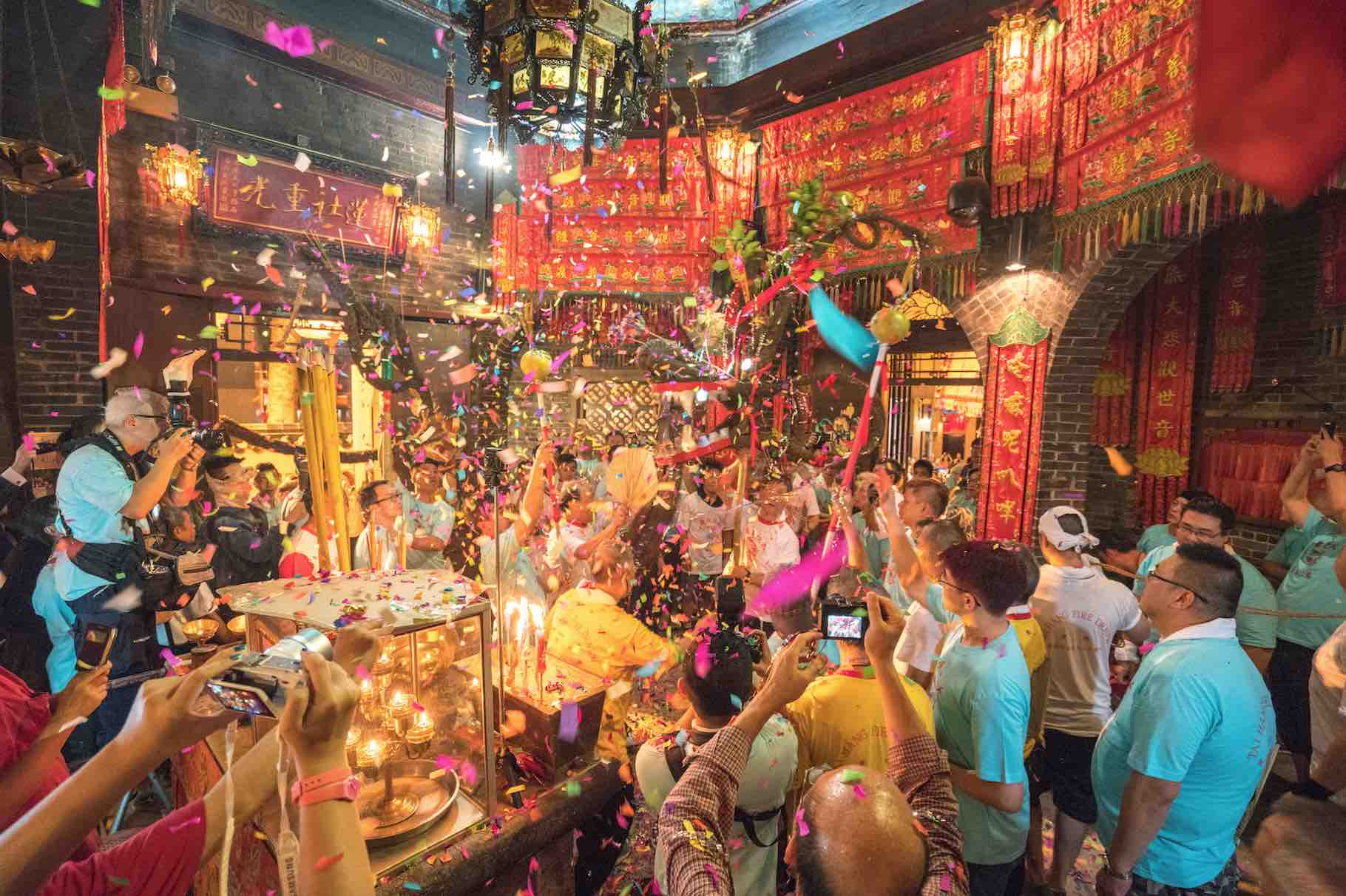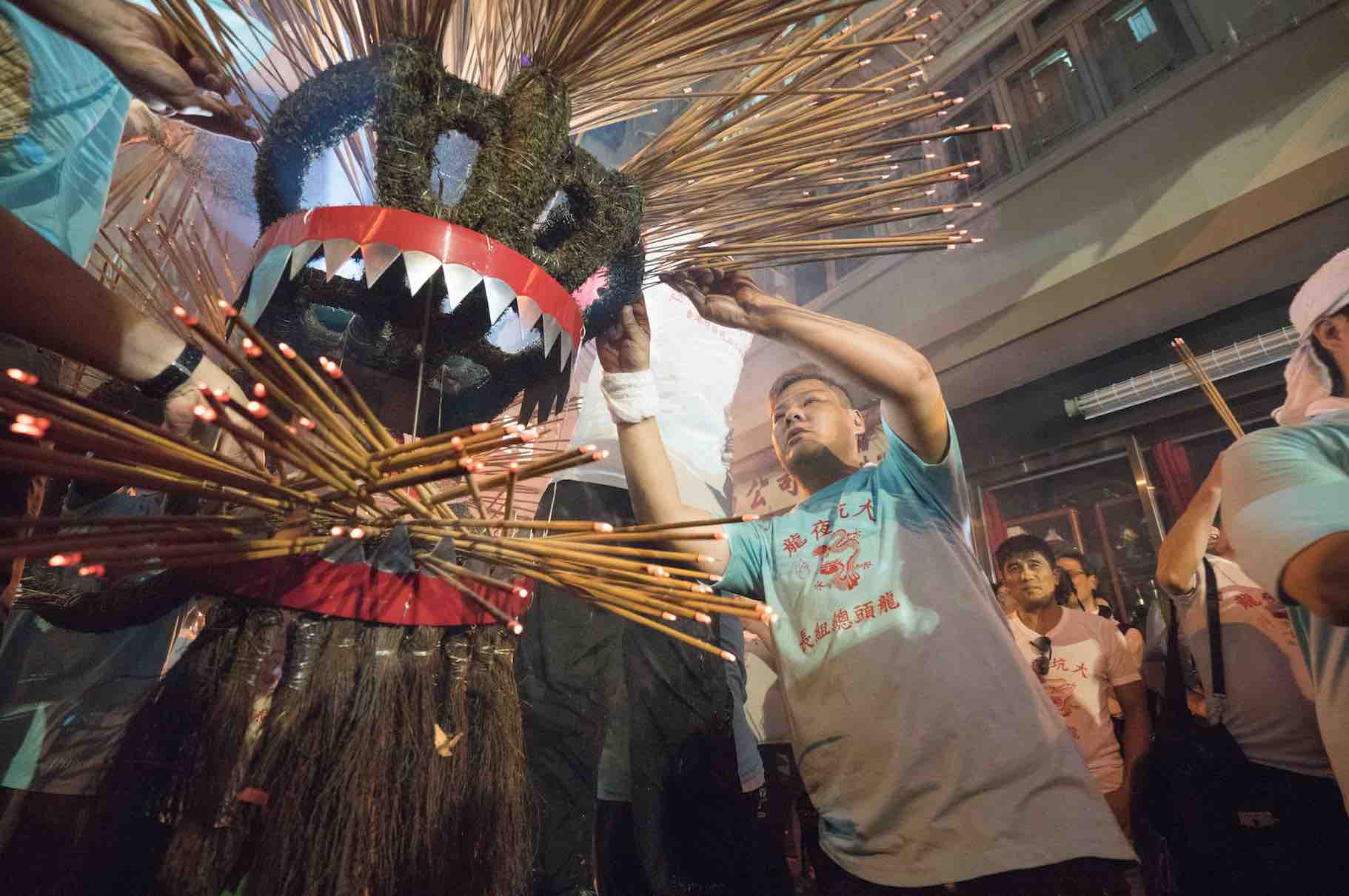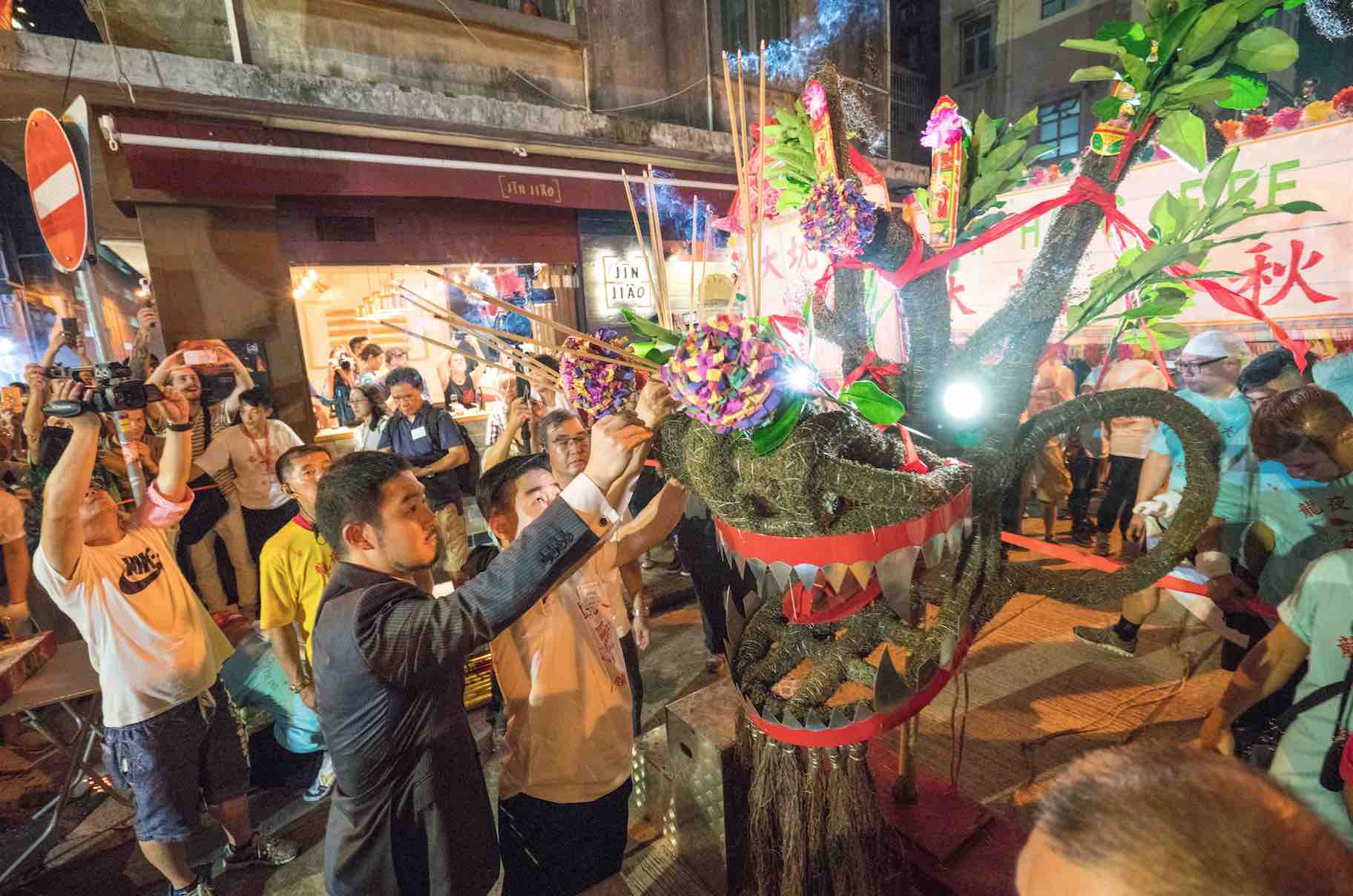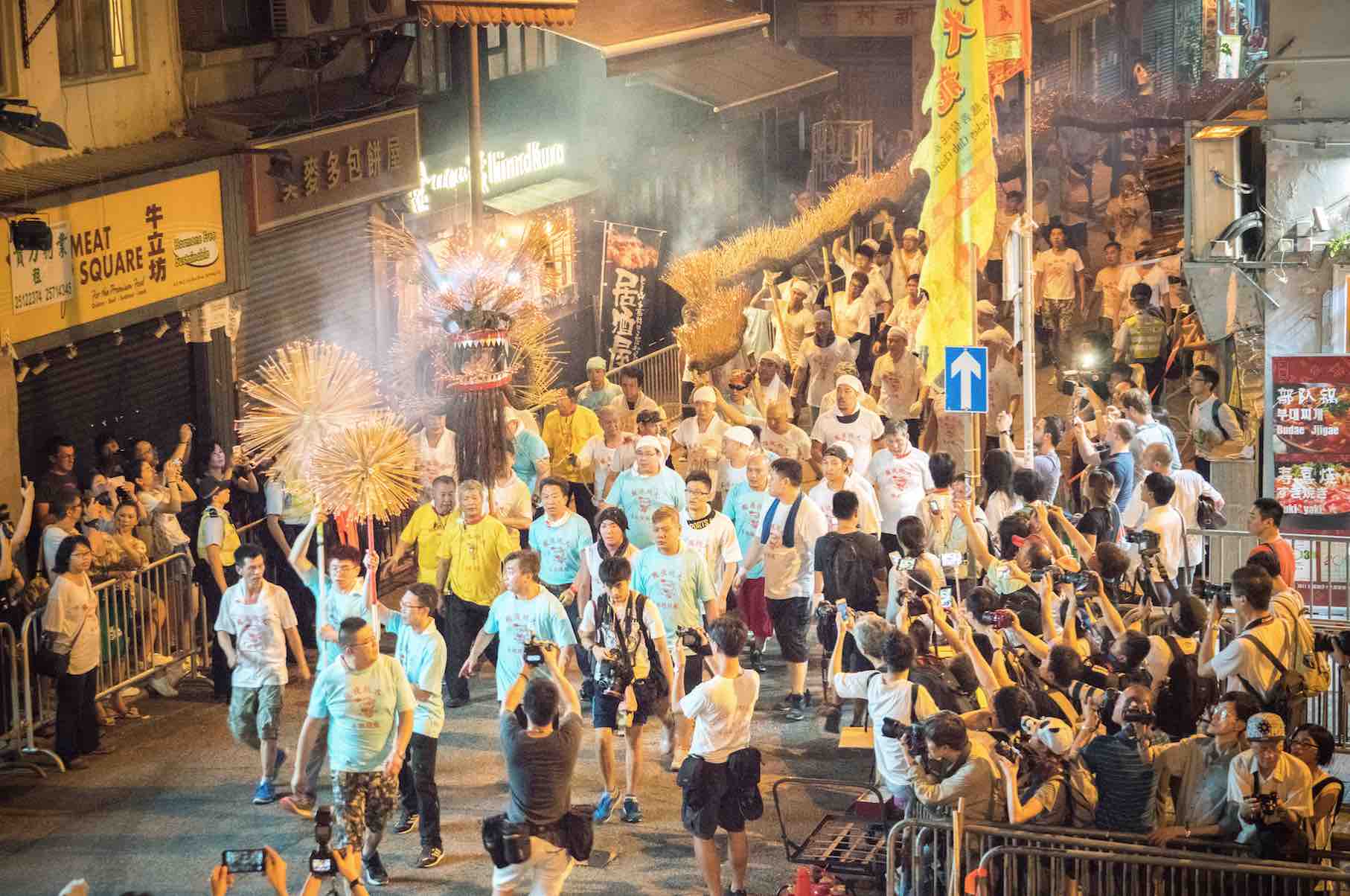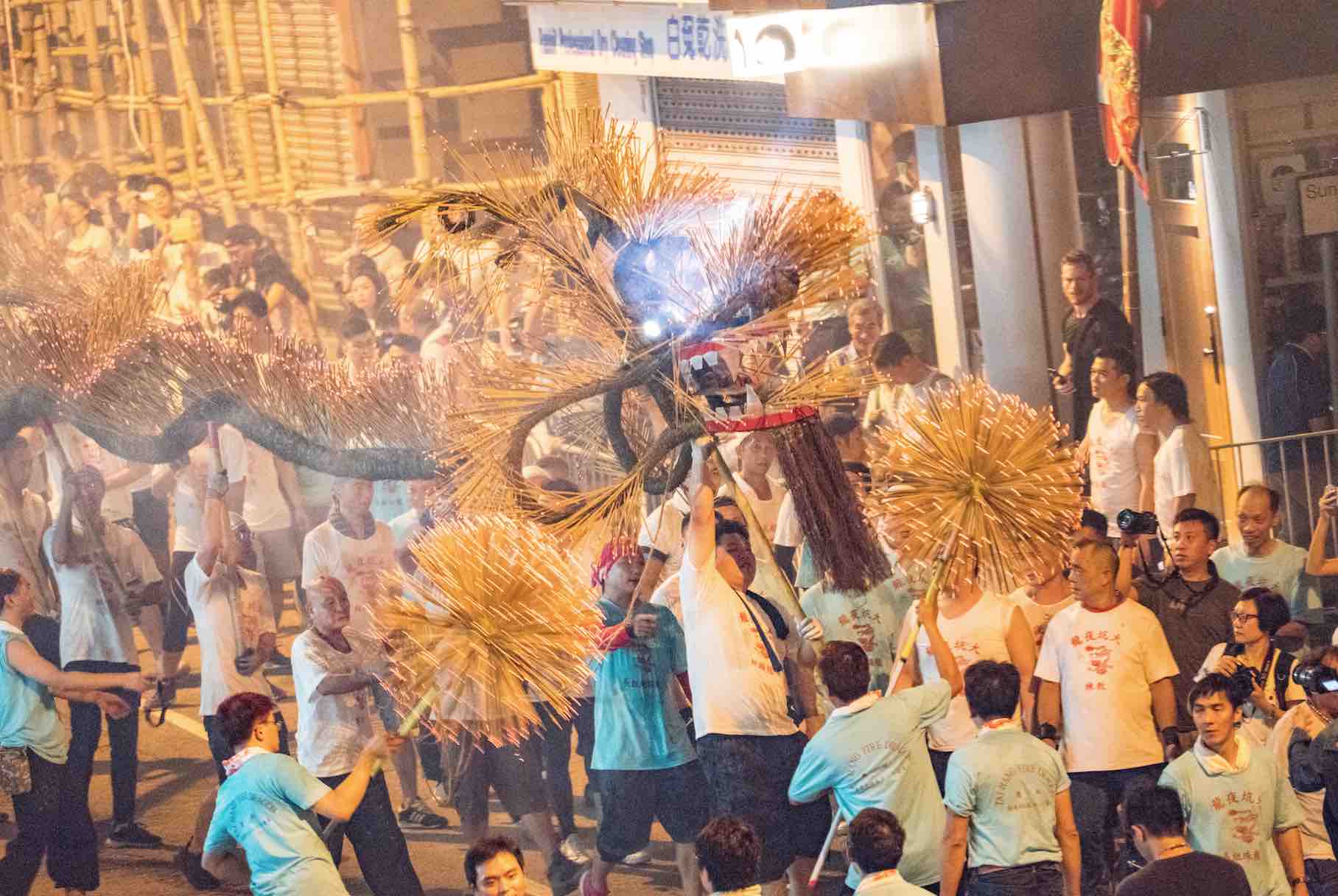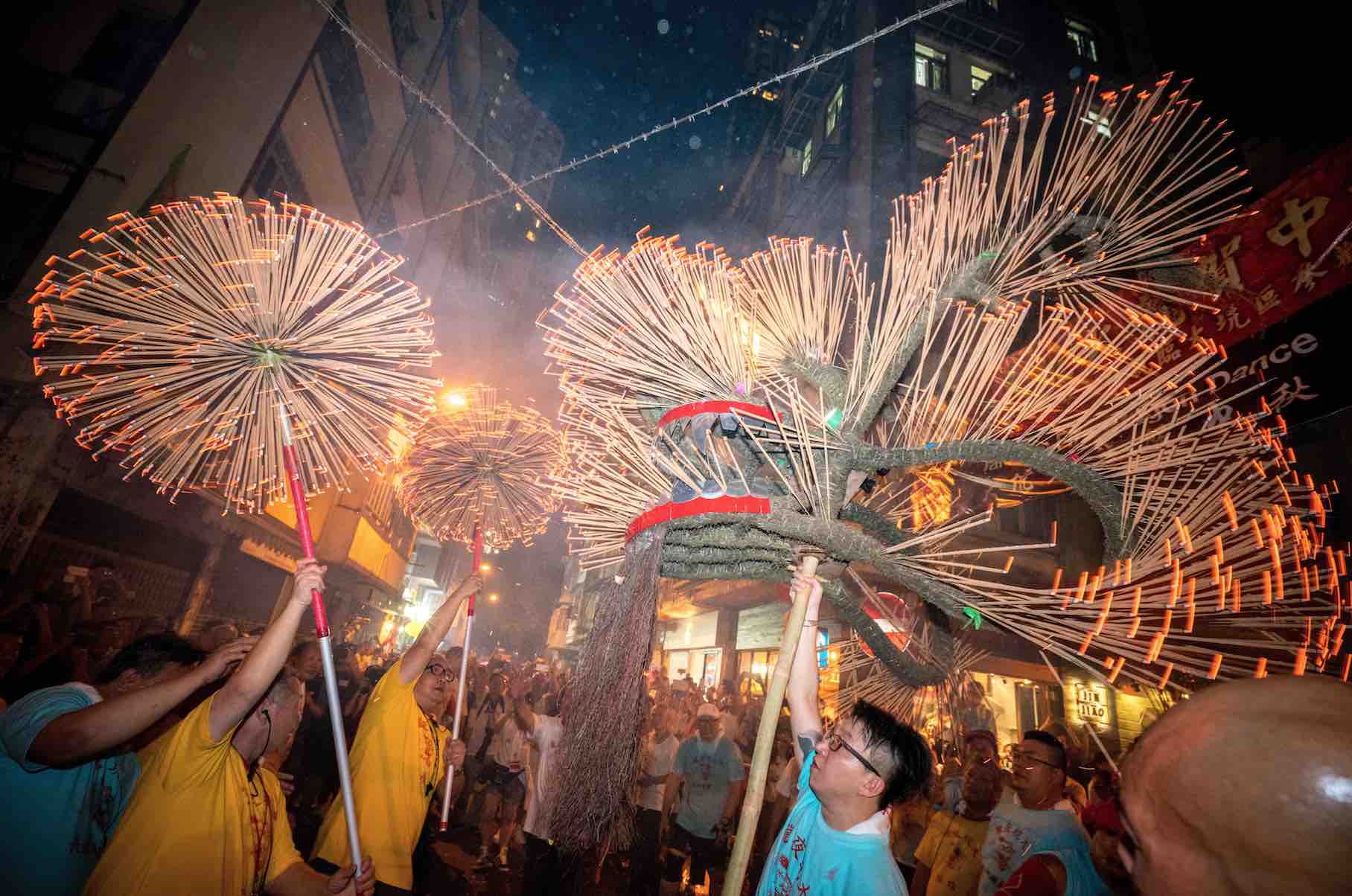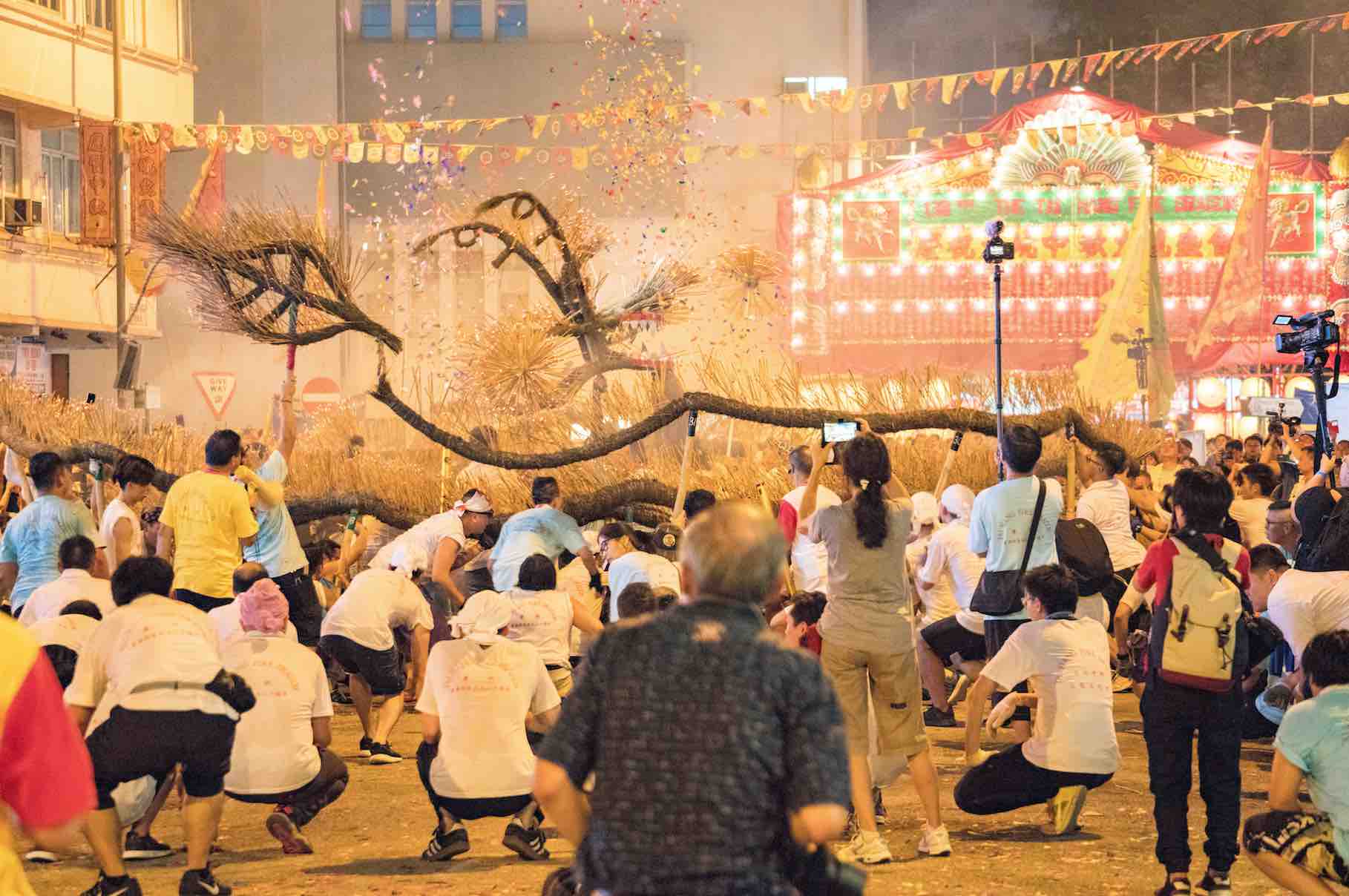Tai Hang was a small Hakka village and home to farmers and fishermen during the 19th century. When the village experienced a series of bad luck, Buddha told a village elder to perform the Tai Hang Fire Dragon Dance and ignite firecrackers during Mid-Autumn Festival. So the villagers made a huge dragon from straw, covered it with lit incense sticks and did what they were told. Accompanied by drummers and erupting firecrackers, the ritual drove the bad luck away. Today, their village has been all but swallowed up by Hong Kong’s fast-growing city. But the dragon dance continued and has even danced its way onto China’s third national list of intangible cultural heritage.
Chan Tak-fai, a 70-year-old veteran is in high spirits as he demonstrated the posture and the steps of the Fire Dragon Dance to a group of “Tai-Hangers” in an outdoor car park. He hope the young residents can remember the essential moves for they are his hope to keep this Hong Kong tradition alive. “People who grew up in Tai Hang understand that taking part in the Fire Dragon Dance is an honour,” Chan says. “If you haven’t taken part in it, you are not a real Tai-Hanger.”
He takes pride in his responsibility to pass on the living heritage of the dance. Since 1880, the unique tradition has become an annual event to pray for good health and prosperity for the village and has been kept alive thanks to the efforts of generations of Tai Hang residents. In fact, it was named one of the key items in Hong Kong’s Intangible Cultural Heritage List and was inscribed on the national list in 2011. This year, the event was held between 3 – 6 October 2017.
Today, Tai Hang is no longer a village and many of the original inhabitants have left. It has transformed into a hip neighbourhood, home to trendy restaurants and posh apartments. But the tradition of the Fire Dragon Dance remains, and many indigenous Tai Hang people return to their old neighbourhood to take part in or watch the dance. One of them is 21-year-old Alan Fok Chun-fung. As a child, he was mesmerised by the beauty of the 220-feet long “dragon” made of bamboo, straw and tens of thousands of incense sticks that lit up Tai Hang’s dark streets.
“I lived upstairs, so I had a view of the Fire Dragon from above,” says Fok, recalling his childhood memories of Wun Sha Street, one of the key dance locations. “I was fascinated by the beauty and movement of the Fire Dragon. Then my mother suggested I take part in it.”
Fok first took part in the dance at the age of 14. His passion for the dance has moved Pang Man-kan, a shy 81-year-old elder, who has been involved in the dance since he was a teenager and became a consultant when he retired. “It’s great to see so many young people taking part. Even Westerners living here are passionate about it, and we welcome them all,” said Pang.
Controlling the Fire Dragon is no laughing matter. Made up of 32 segments, the entire dragon weigh over 100 kilograms – the head alone weighs 48 kilograms. But the weight is not enough to keep young people like Fok away. While the elders of Tai Hang are concerned about passing on the tradition, the young generation thinks differently.
“The history and tradition matter, but to us, the most important thing is the sense of belonging to this local community,” Fok says.

